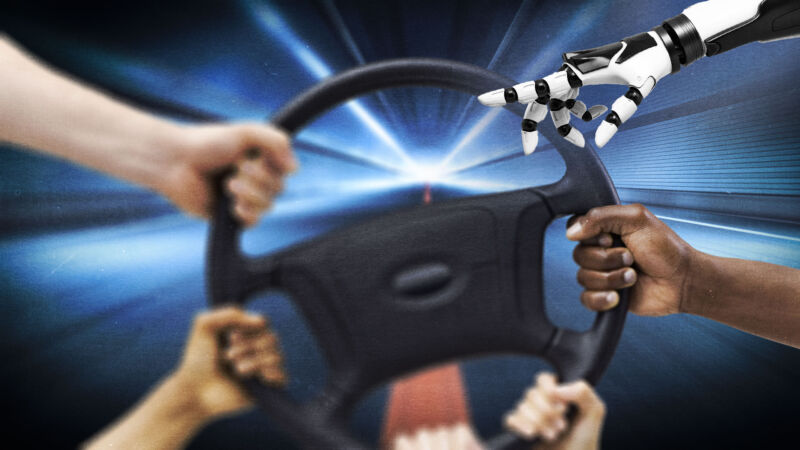
Aurich Lawson / Getty Images
Many users of Cadillac’s Super Cruise and Tesla’s Autopilot driver assist systems are overconfident in those systems’ abilities, according to a new study from the Insurance Institute for Highway Safety. IIHS surveyed owners of Super Cruise-equipped Cadillacs, Autopilot-enabled Teslas, and also owners of Infinitis or Nissans with ProPilot Assist, and found that “large percentages of users” of both Super Cruise and Autopilot “were comfortable treating their systems as self-driving.”
The evolution of advanced driver assistance systems—aka ADAS—has happened in parallel to the development of fully autonomous driving technology. Many ADAS features are safety oriented, like blind spot monitoring or automatic emergency braking.
But it’s usually the convenience feature double-whammy of combining adaptive cruise control (which maintains your speed relative to the car in front) and lane keeping (auto steering that keeps the car within the lane) that makes the headlines, and often the news is not good.
Because the car can accelerate, brake, and steer in response to sensor input telling it what other road users are doing, it can be tempting to think of these systems as autonomous. But the truth is they are only partially automated; both their designers and the authorities assume there is a human being paying attention, overseeing the system at all times.
To that end, the overwhelming majority of partially automated driving systems—known as “level 2” in SAE’s nomenclature—require driver input every 15 seconds before disengaging. But a few systems allow for longer periods of hands-free driving.
What systems did they study?
Cadillac’s Super Cruise system uses a driver-facing infrared camera that tracks a driver’s eye movements to ensure they are looking at the road ahead while the system is active. Cadillac’s system also has a relatively rigid operational design domain and can only be engaged on ~200,000 miles of pre-mapped divided-lane, restricted-access highways.
Tesla has finally added a driver-facing camera to its Autopilot system, albeit while removing sensor redundancies by ditching radar and now ultrasonic sensors. Like Super Cruise, it allows drivers to take their hands off the wheel for longer periods of time, but unlike the Cadillac system, Autopilot is not restricted to highway use.
The third system that IIHS included was Nissan’s (and Infiniti’s) ProPilot Assist, albeit the earlier 1.0 version. Like Teslas before late 2021, ProPilot Assist cars just use a torque sensor on the steering column as a proxy for a real driver-monitoring system. The Nissan/Infiniti system is the least permissive in terms of time between nagging the driver about being engaged.
IIHS’s survey included 200 GM owners, 202 Nissan/Infiniti owners, and 202 Tesla owners, who were each asked questions about the partially automated system in their cars, and then asked about performing certain non-driving activities when in the car, either with the system active or turned off. Survey respondents were also asked about the attention reminders those systems employ, whether they had ever been locked out of the system (Autopilot and Super Cruise only), where they used the systems, and if they ever encountered any unexpected behavior from that partially automated driving system.


